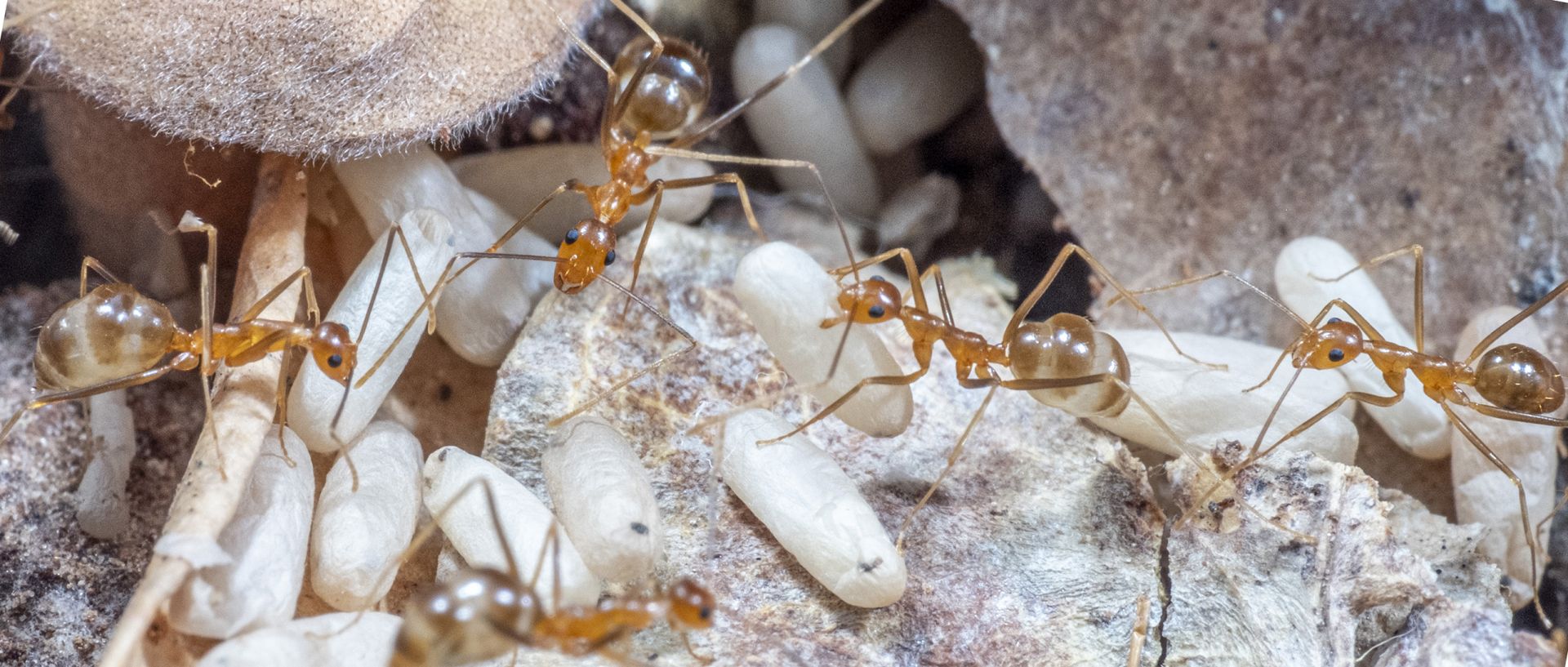Media Releases
New tech targets crazy ant invaders

James Cook University researchers will use a high-tech, ground-breaking technique to try to solve the expensive problem of yellow crazy ant (YCA) infestations.
JCU’s Dr Cecilia Villacorta Rath and Dr Lori Lach will investigate using environmental DNA (eDNA) techniques to track yellow crazy ant invasions in a three-year project, thanks to funding from the Australian Government Department of Agriculture, Water and the Environment.
Dr Villacorta Rath said invasive invertebrates are estimated to cost agricultural production $4.7 billion annually, and up to $8 billion, considering all impacts and expenses.
“YCA colonies can reach such large population numbers that properties can become unliveable, unprofitable and unsellable as ants invade. YCA also pose a threat to the environment by removing biodiversity as they spread. The impact of the incursion of YCA in Cairns alone will exceed $700 million over the next seven years if not controlled,” said Dr Villacorta Rath.
She said current methods of invasive ant detection rely on trapping, detection dogs, or sightings, and are labour-intensive, costly and highly reliant on weather conditions.
“The project will apply eDNA methods for YCA detection. This involves testing soil and leaf samples for traces of the ants’ DNA.
“The samples can be collected with minimal training and sent to the lab. If successful, it means we increase the sampling capacity by orders of magnitude,” said Dr Villacorta Rath.
She said the technique could potentially be applied to other pests such as red imported fire ants and electric ants.
“JCU is currently conducting eDNA monitoring of species of management concern, including amphibians, fish, reptiles and aquatic plants, in northern Australia. We know eDNA works in these environments, it’s just a matter of whether it translates to the battle against ants too,” said Dr Villacorta Rath.
Dr Lach said the ability to simply take samples from the environment and test for invasive ants could revolutionise pest detection.
“One of the keys to stopping invasive species is speed of detection of the initial invasion front. If we can respond quickly, we can snuff out potentially ruinous infestations before they really get going,” said Dr Lach.
This project is supported by JCU through funding from the Australian Government’s Established Pest Animals and Weeds Management Pipeline Program - Advancing Pest Animal and Weed Control Solutions, and in collaboration with Townsville City Council, local NRM agencies and relevant stakeholders from the Townsville and Cairns regions.